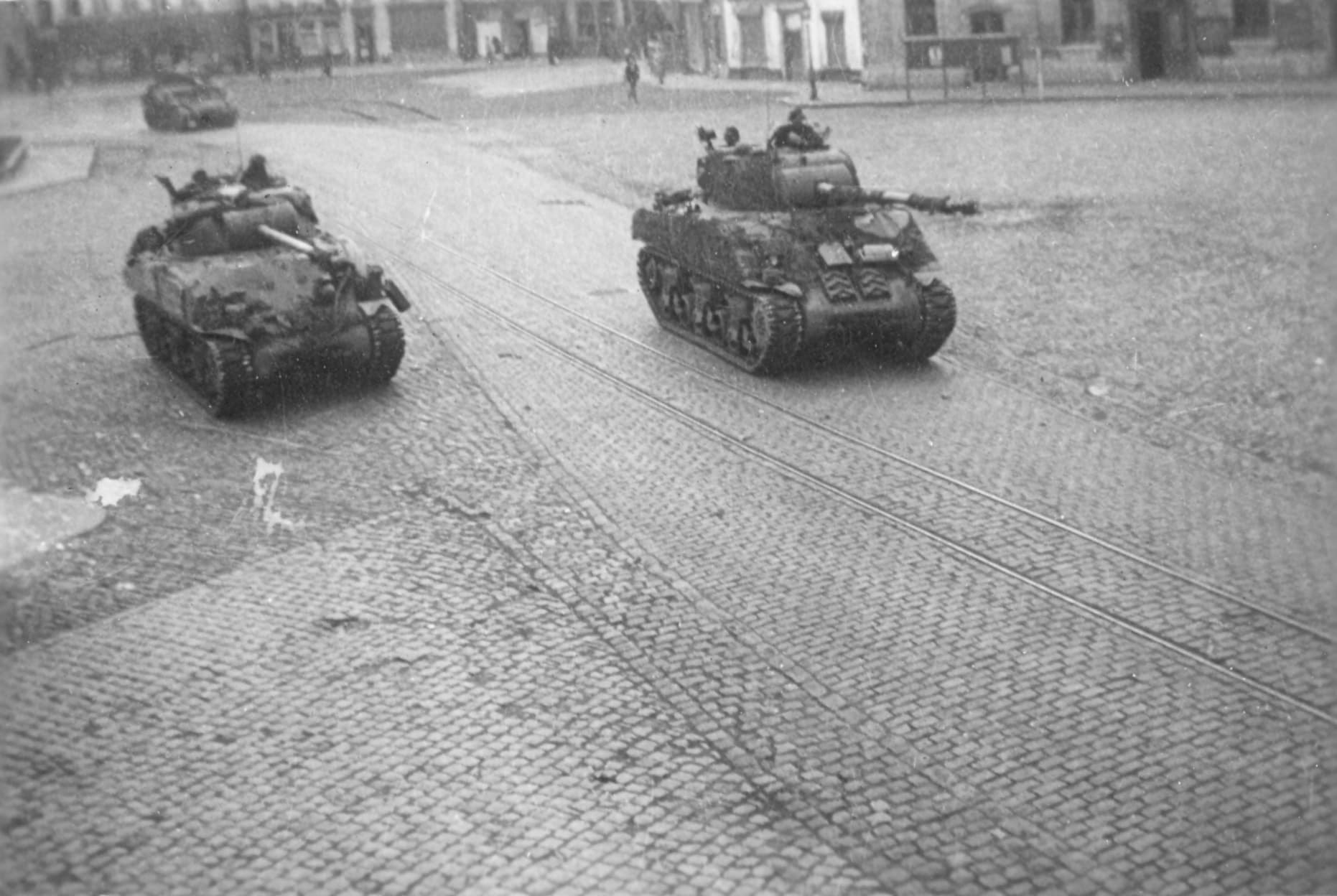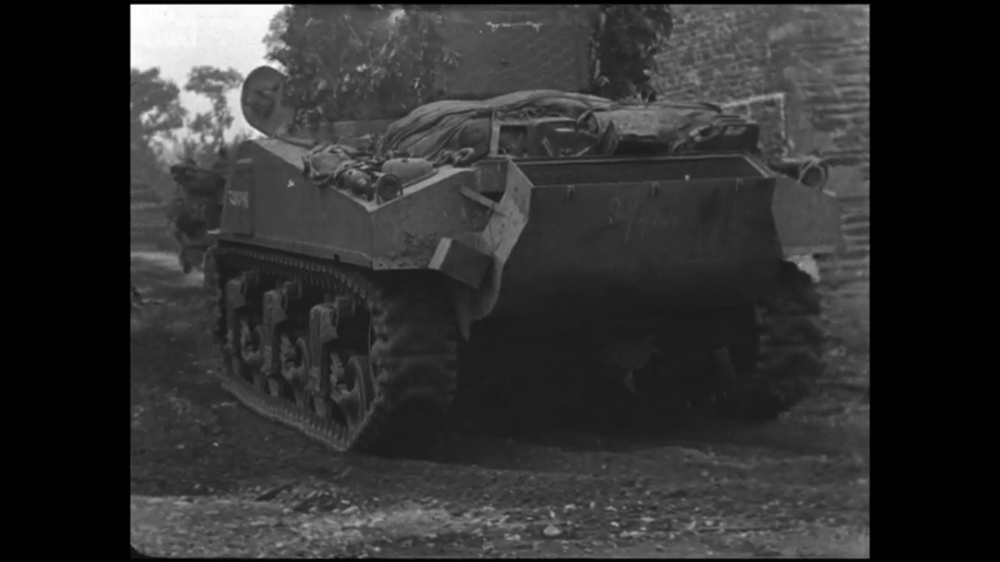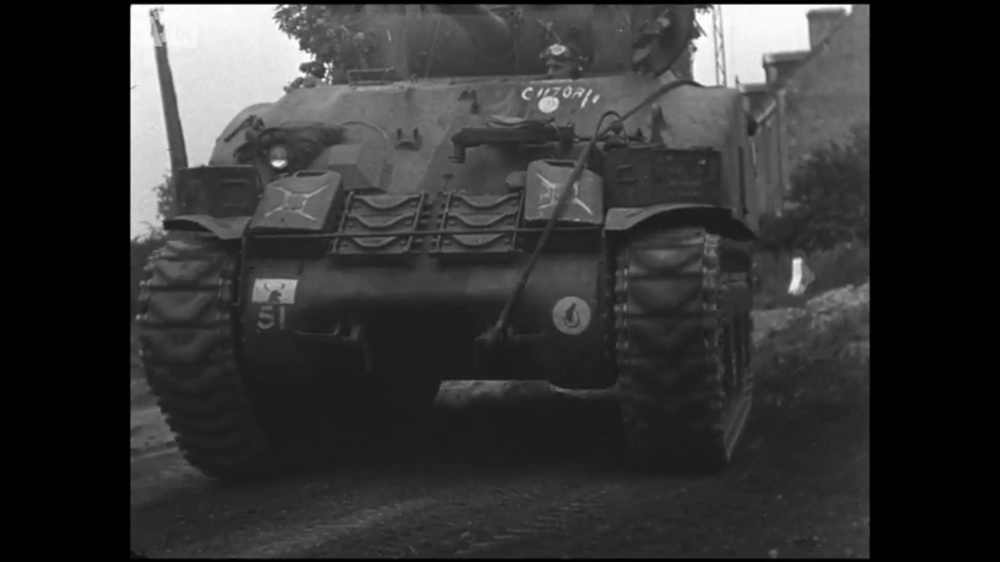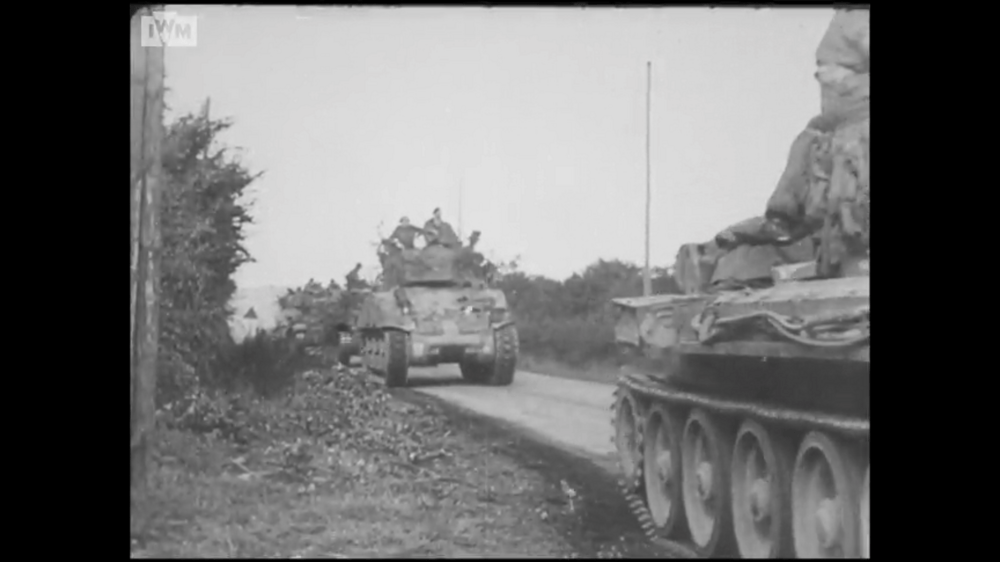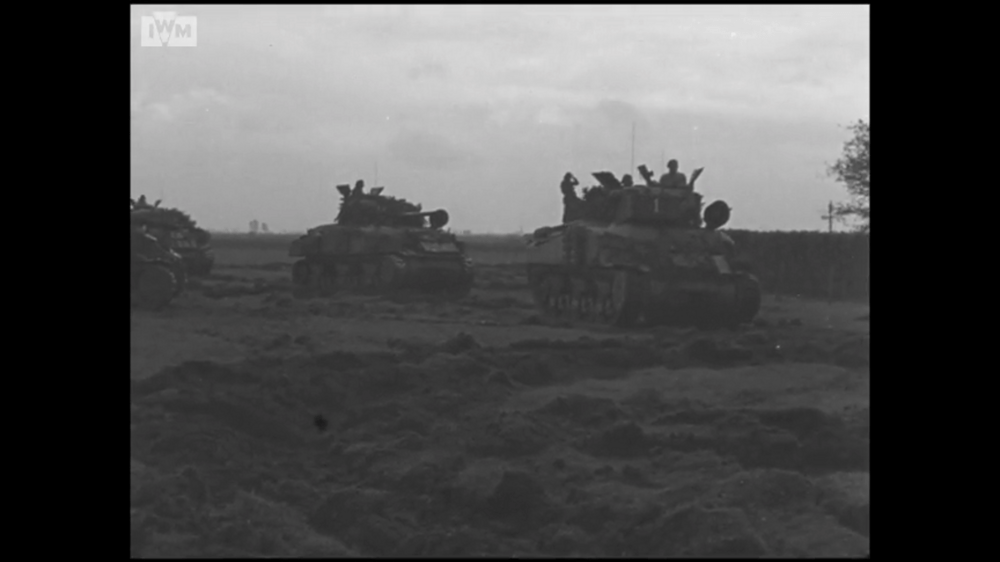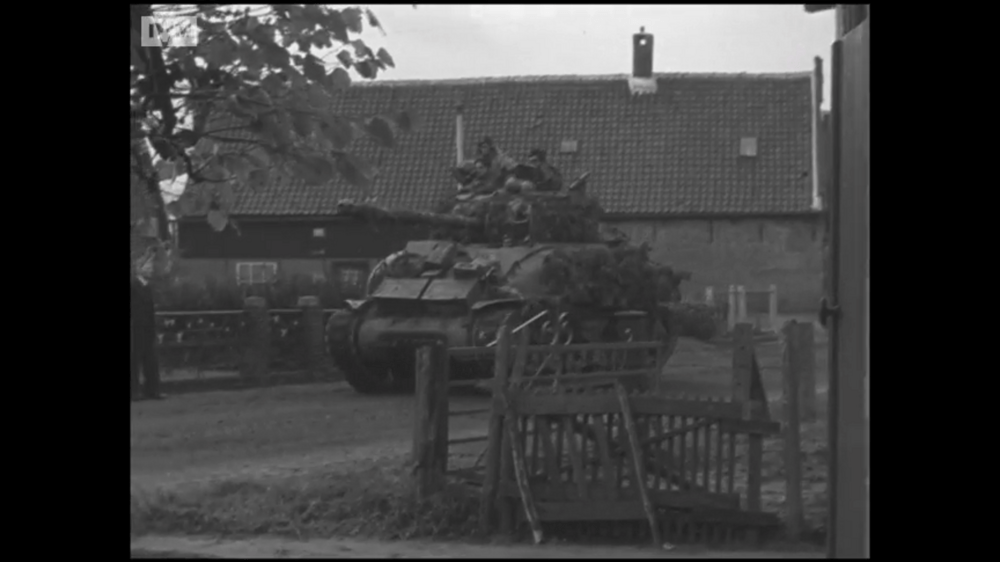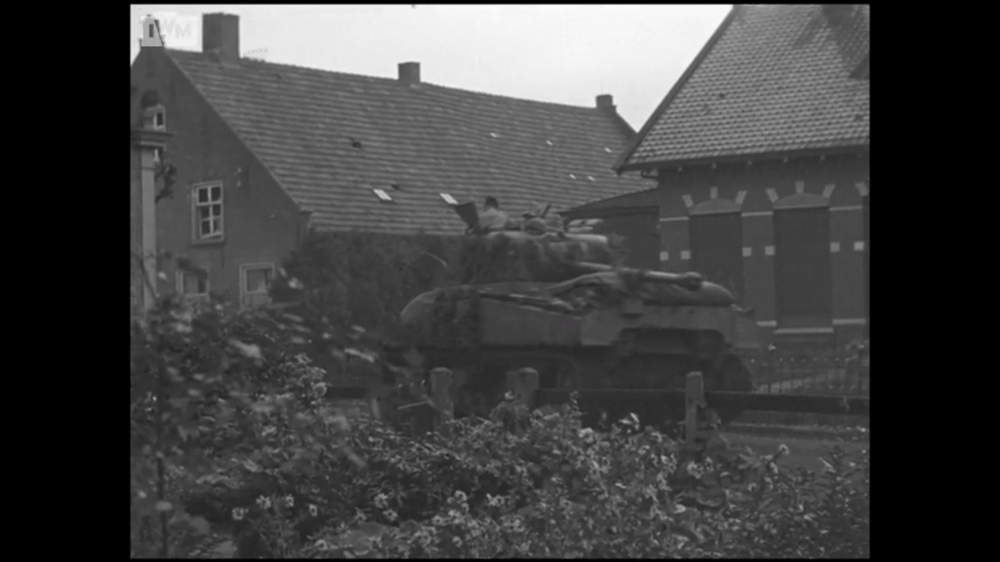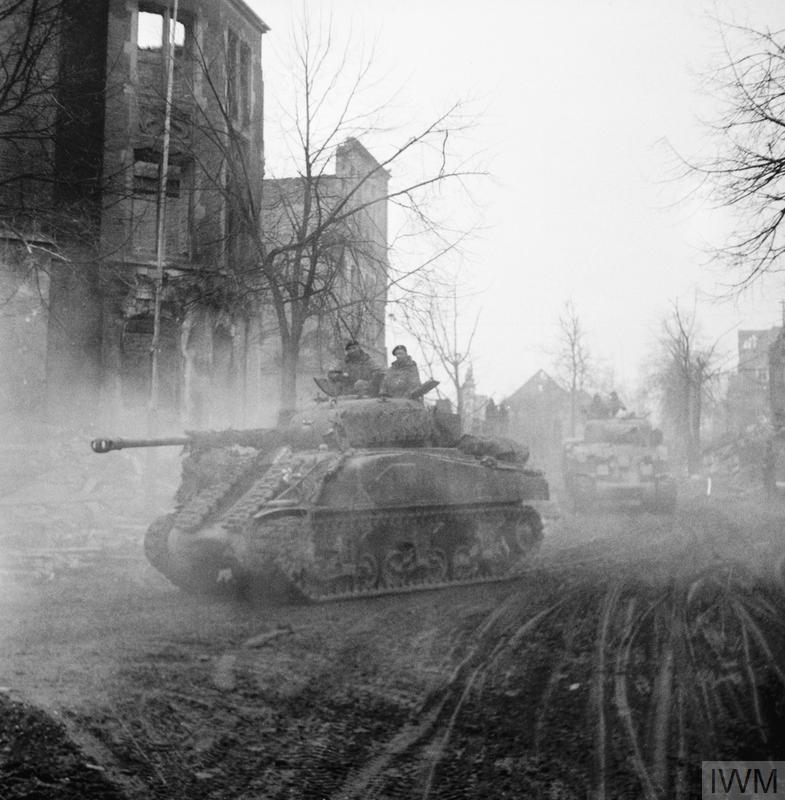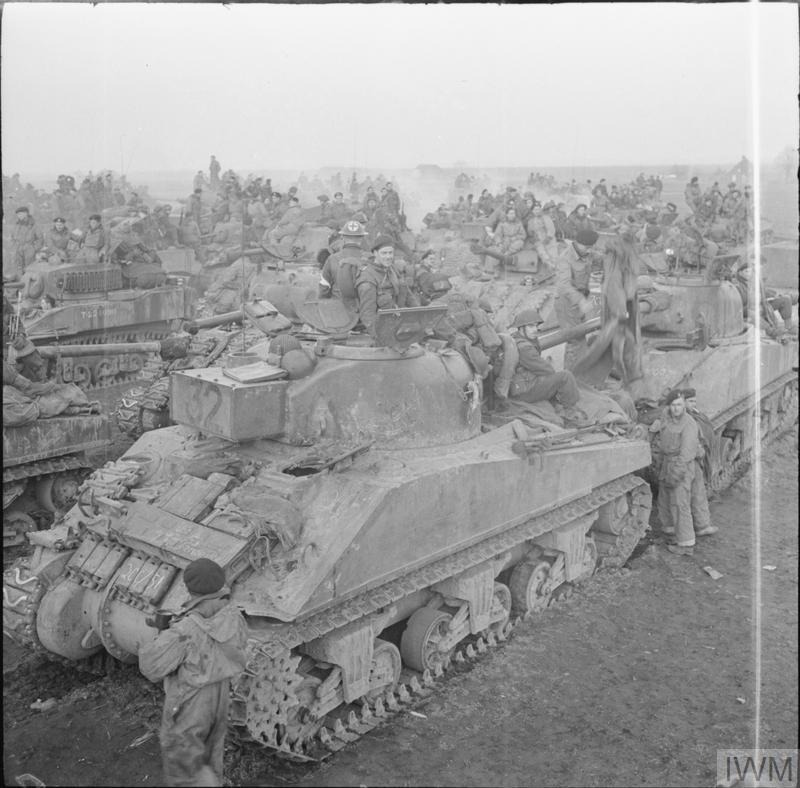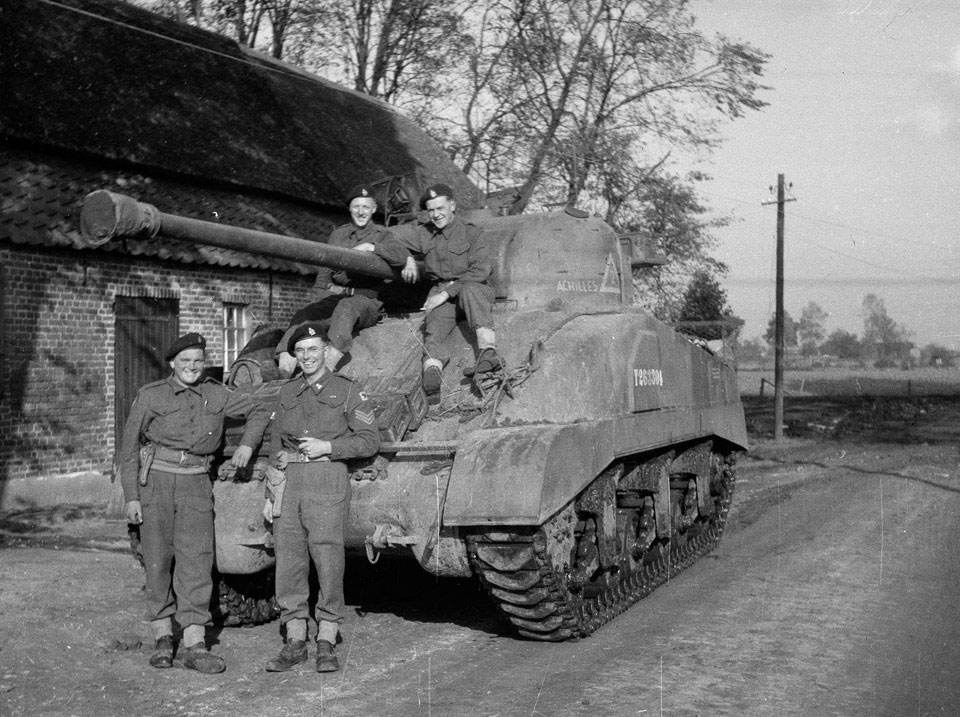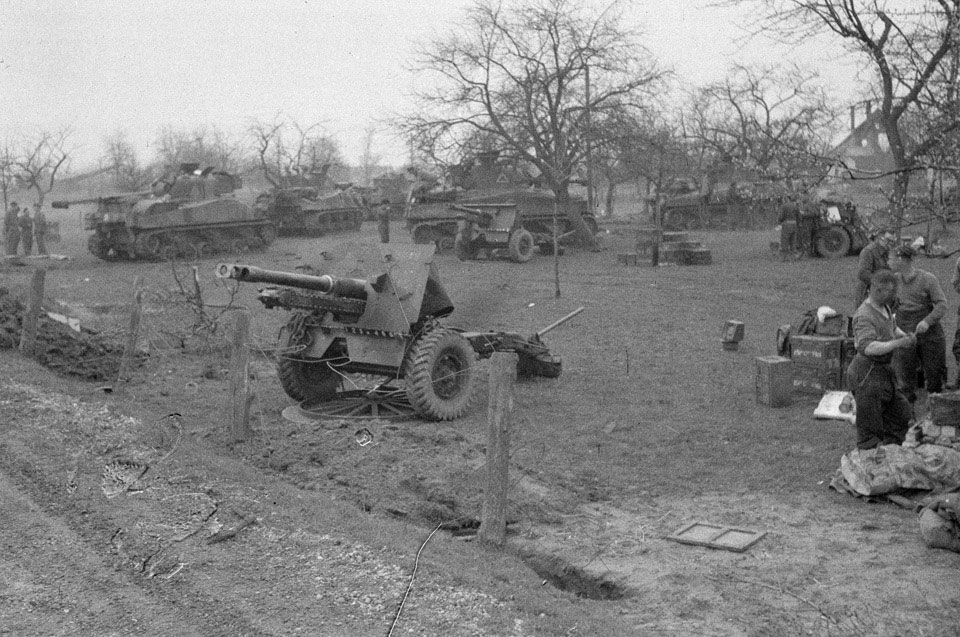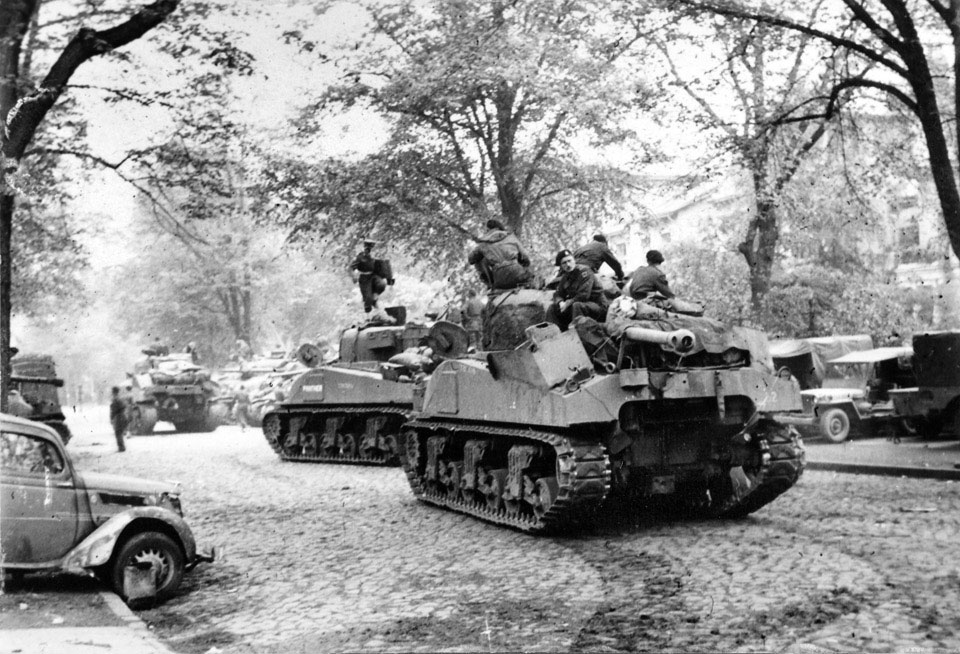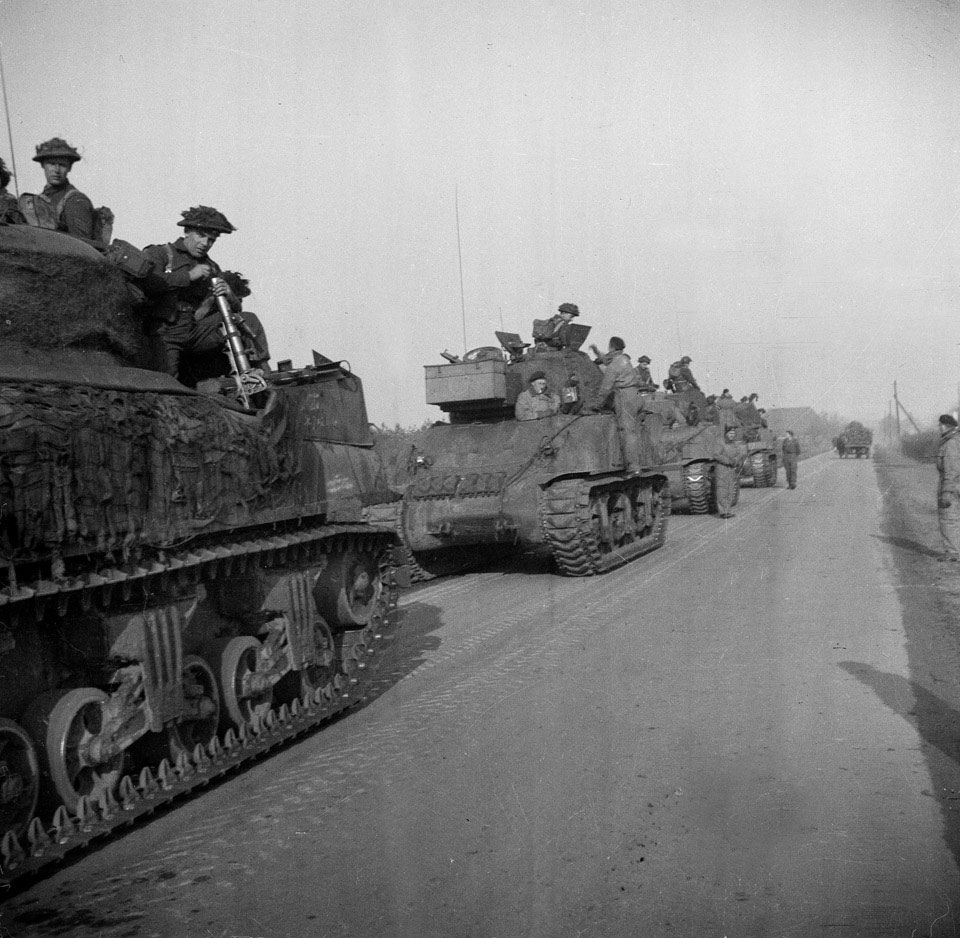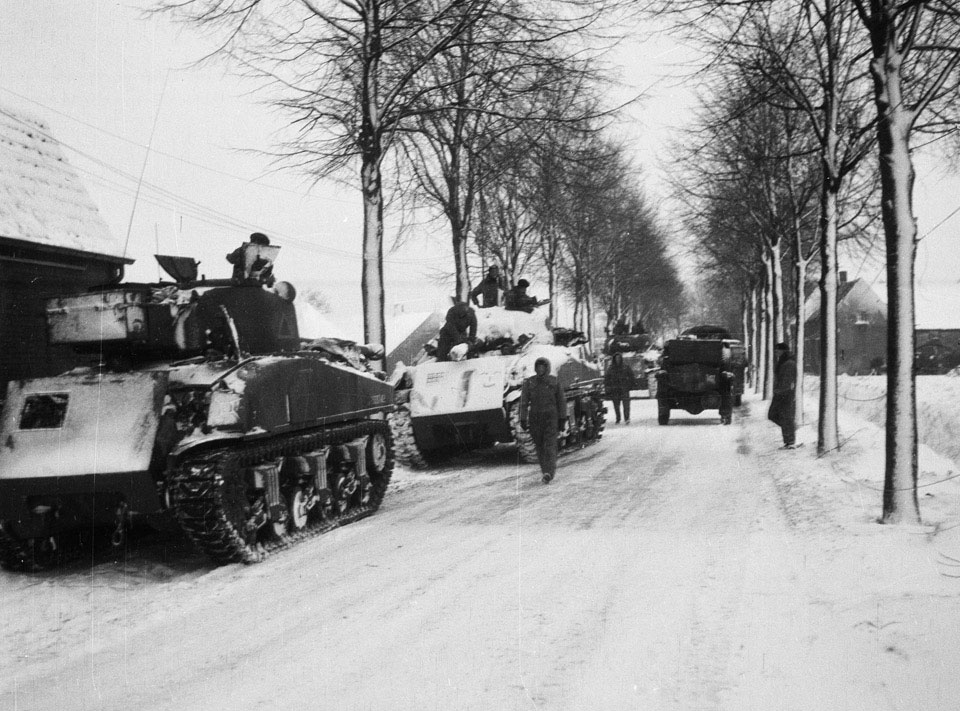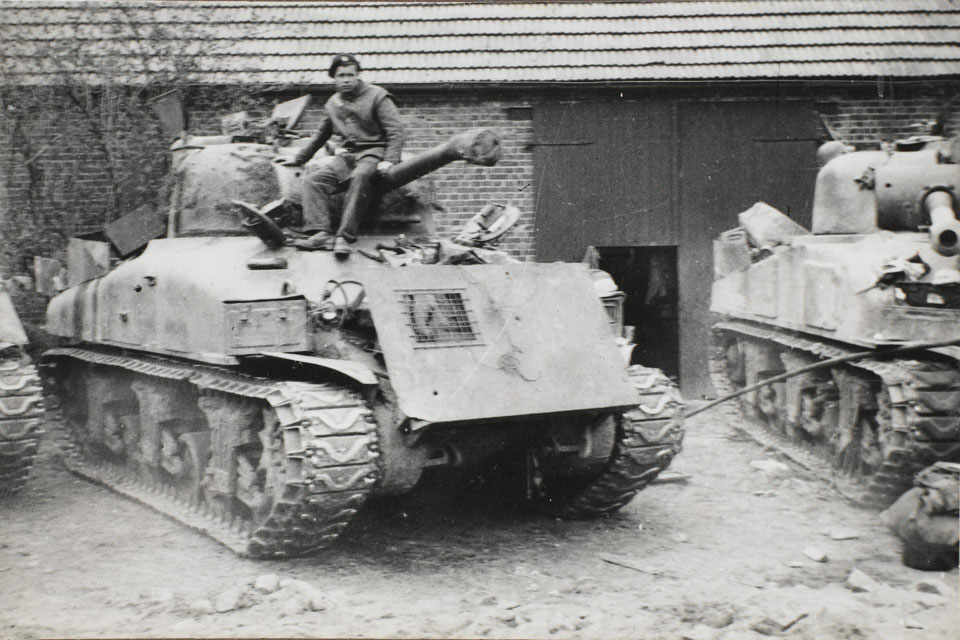- Yes
- No

A Sherman Firefly advances towards Aunay-sur-Odon, 31 July - 1 August 1944. - IWM (B 8370) An interesting modification here is the addition of the stowage box on the front. These were normally fitted to the rear of Sherman Vs/VCs.
As the nation that re-armed their Shermans with the 17pdr anti-tank gun to create the Firefly, it’s a shame that Britain only has two of them with only one of these being researchable. As such I’d like to suggest that Britain receives the Sherman Mk. IC Hybrid as a researchable vehicle foldered with the current Sherman Firefly (Mk. VC).
EDIT - With the addition of the Overlord Pack, Britain now has three Fireflies. As the TT Firefly is now outnumbered 2-1 by premiums, and given how one of them is also a VC, I think there’s now even more of a reason for this to be foldered with it.
The Mk. IC Hybrid is already available in-game in the Italian tech-tree as the Sherman Tipo Ic (composito). This should be a relatively easy implementation requiring changing to the British paint, removing the co-driver, removing the hull MG and blanking off the aperture, and possibly making some changes to the external fittings (such as stowage boxes, sand shields, or spare track links on the transmission housing) to further differentiate the two nations’ versions.

The Italian Sherman Tipo Ic (composito) currently in the game.
History
The 17pdr was the next logical step in British tank armaments and designs from specifications set by the Tank Board and the General Staff were being drawn up for vehicles to mount it. The A29 was one such design but was cancelled in favour of the A30 while other specifications were created which eventually led to the A34 Comet and the A41 Centurion. Progress was slow and the A30, being nothing more than a very heavily modified Cromwell, was proving unsatisfactory in trials at Lulworth.
Royal Tank Regiment officer Major George Brighty, also at Lulworth, thought the Sherman would provide a good base for the gun but was having difficulty with making it practicably fit. The gun could be mounted in the turret but the space was insufficient for the amount of recoil travel the 17pdr required. One solution was to lock the gun in the turret and have the tank itself absorb the recoil by using its suspension and sheer weight.
At this point Brighty was joined by fellow RTR officer Major George Witheridge who tested this setup but deemed it unsuitable and suggested continuing with trying to fit a proper recoil mechanism. A directive was sent down from the Department of Tank Design ordering a halt on the project. Witheridge applied to Major General Raymond Briggs, the Director Royal Armoured Corps, who took the proposal to Claude Gibb, the Director General of Weapon and Instrument Production at the Ministry of Supply. Gibb approved of the idea and thus became an official project.
W. G. K. Kilbourn, an engineer working for Vickers, was assigned to the project and modified the recoil system to achieve a much shorter travel distance as well as how much contact was between the gun and its cradle in order to improve balance. The breech was modified by redesigning the breech ring and relocating the breech closing spring case so that the breech block opened sideways instead of up and down which considerably eased the loading of the gun in the tight confines of the turret. The gun was not simply turned on its side. From these modifications came the QF 17-pounder Mk. IV.

Due to the significant size of the breech and guard the loader was effectively blocked off from the right side of the turret and would struggle to get out quickly. Because of this a rectangular hatch was added on the left side which also allowed easier replenishment of the ammunition. Some IC Hybrids were converted from tanks mounting the D78461 turret which already had the oval-shaped loader’s hatch and so didn’t need this change.


Note the oval loader’s hatch folded flat.
To help balance the gun, the canvas bag which would catch empty shell cases was replaced with a heavier metal container. Thanks to this (and the option of adding extra weights) the gun became very well balanced but firing on the move proved too difficult and so the gun stabiliser was also removed.
A hole was cut into the back of the turret and an armoured box was welded on with the radios placed inside. This was done to give the loader a bit more space.
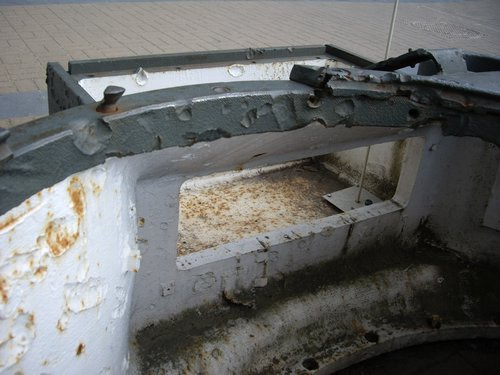
The ammunition stowage was revised and the co-driver’s position was deleted with the MG aperture blanked off with an armoured plug in order to provide more stowage space for the larger rounds of the 17pdr.
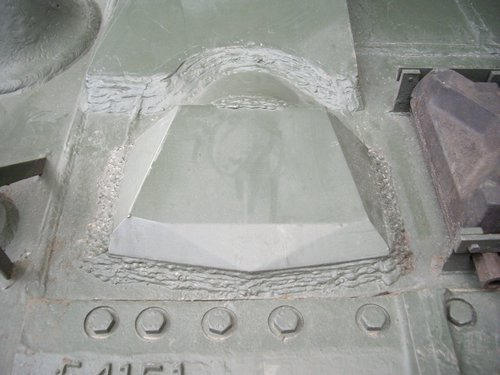
The mantlet was also altered to better fit the 17pdr.
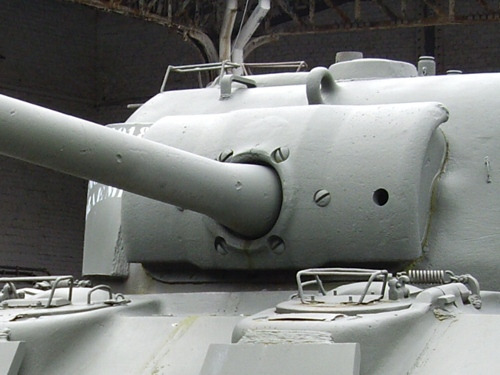
Conversion
Following the creation and inspection of this prototype vehicle, the War Office issued an order for 2,100 17pdr conversions.
While every model of Sherman might be capable of being converted, restrictions were put in place which meant that only certain tanks were suitable for conversion. These are mostly down to the availability of the different Sherman models and consist of:
- Petrol-engined only
- Must have the M34A1 gun mantlet
- Must have hydraulic traverse gear (possibly even as specific as having to be the Oilgear-produced system)

Because of these (and other) factors, the M4/Mk. I, M4 Composite/Mk. I Hybrid, and M4A4/Mk. V were the only ones to see significant conversion and service (iirc some 100 or so A3s were converted for the US Army) becoming the Mk. IC, Mk. IC Hybrid, and Mk. VC respectively.
The Hybrid is an oddity as, being converted from an M4 Composite/Sherman I Hybrid, it has a cast front on an otherwise welded hull. This came about when it was realised that producing the cast hulls of the M4A1 was much quicker especially when considering the amount of welding that needed to be done on the front hulls of the other models. The Ordnance Department worked with the Chrysler Corporation to design a cast front that smaller foundries, incapable of casting full hulls, could produce to then be attached to the welded body and thus helping to speed up production. These were built as both small and large-hatch versions.

Evidence seems to suggest that the majority of conversions were carried out on Mk. Vs and that, while they did see service in Normandy, Mk. ICs and IC Hybrids seem to become more numerous in North-West Europe as the campaign progresses.
Initially, some effort was made to keep tanks of the same model together in the same units i.e. the Armoured Brigades of the 11th, Guards, 1st Polish, and 4th Canadian Armoured Divisions had Sherman Vs, 33rd Armoured Brigade had Sherman Is (M4s), 4th AB had Sherman IIs (M4A1s), 8th, 27th, and 2nd Canadian AB had Sherman IIIs (M4A2s). Replacements were kept behind with the largest numbers of these being IIIs and Vs.
However, this meant that, even in the best of circumstances, some Troops would have mixed models of 75mm and 17pdr tanks. Worse is that it was decided that the Challengers would be given to Cromwell units but with only 200 built priority was given to the Recce Regiments meaning that the Cromwell-equipped Sabre Squadrons of 7th Armoured Division had Troops consisting of two completely different types of tank.
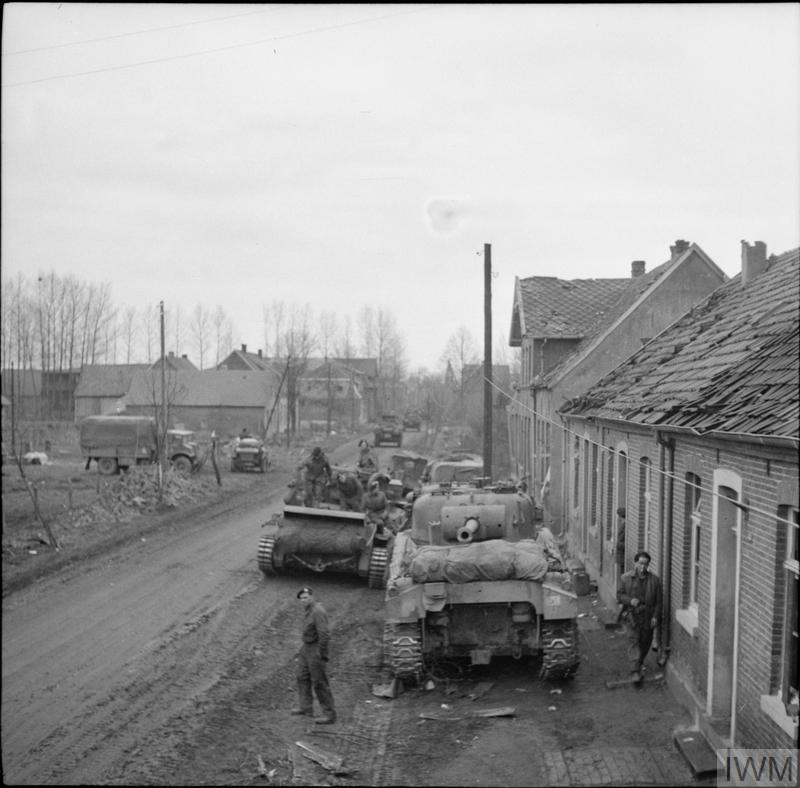
Sherman Firefly and other vehicles of 7th Armoured Division in Ahaus, 1 April 1945. - IWM (BU 3135)
Service (Second World War only)
Fireflies ended up seeing service with the British, Canadians, Polish, Czechoslovakians, New Zealanders, and South Africans across North-West Europe and Italy providing anti-tank support.
When the units first received their Fireflies there seem to have been mixed ideas on how to best implement and use them with one idea being to have a Troop made up entirely of Fireflies in each Squadron to be dished out to the 75mm Troops as and when needed.
The standard configuration soon became 1 Firefly to every 3 or 4 75mm tanks but due to losses (moreso later in the NWE campaign around late ‘44) this could vary. For example, during the fighting for Geel Cpt. Stuart Hills’ Troop of the Sherwood Rangers Yeomanry consisted of his Mk. III, a Mk. IC, and a Mk. IC Hybrid.
Cpt. Stuart Hills’ Troop enters Geel market square. Up front are the Fireflies of Sgt. Stan Nesling (Right - Mk. IC) and Cpl. Cyril Burnet (Left - Mk. IC Hybrid) with Hills’ Mk. III at the back.
Specifications
The specifications for this tank would mostly be the same as the aforementioned Sherman Tipo Ic already in the game. Differences are that the co-driver would be removed (reducing the crew to 4), and an armoured plug would be placed over the hull MG aperture. The removal of the co-driver would mean an ammunition increase for the British version of 15 shells to a total of 80.
Armour
Nose - 63.5mm
Glacis - 63.5mm
Lower Hull Sides - 38.1mm
Upper Hull Sides - 38.1mm + three 25.4mm applique plates
Hull Rear - 38.1mm
Hull Roof - 19.05mm
Turret Ring Collar Front/Sides/Rear - 63.5mm/19.05mm/19.05mm
Engine Deck - 19.05mm
Turret Front - 76.2mm/one 50mm section at the gunner’s controls
Mantlet - 88.9mm inner + 50.8mm gun shield
Turret Sides - 50.8mm
Turret Rear (Radio Bustle) - 63.5mm
Turret Roof - 25.4mm
Ammunition
Figures taken from War Thunder Wiki
Armor penetration (mm) at a distance:
10m / 100m / 500m / 1000m / 1500m / 2000m
Shot Mk.6 - AP: 171 / 168 / 155 / 139 / 126 / 113
Shot Mk.4 - APC: 171 / 168 / 155 / 139 / 126 / 113
Shot Mk.8 - APCBC: 190 / 187 / 172 / 155 / 140 / 126
Shell Mk.1 - HE
17pdr Shell SS Mk.1 - Smoke
Images
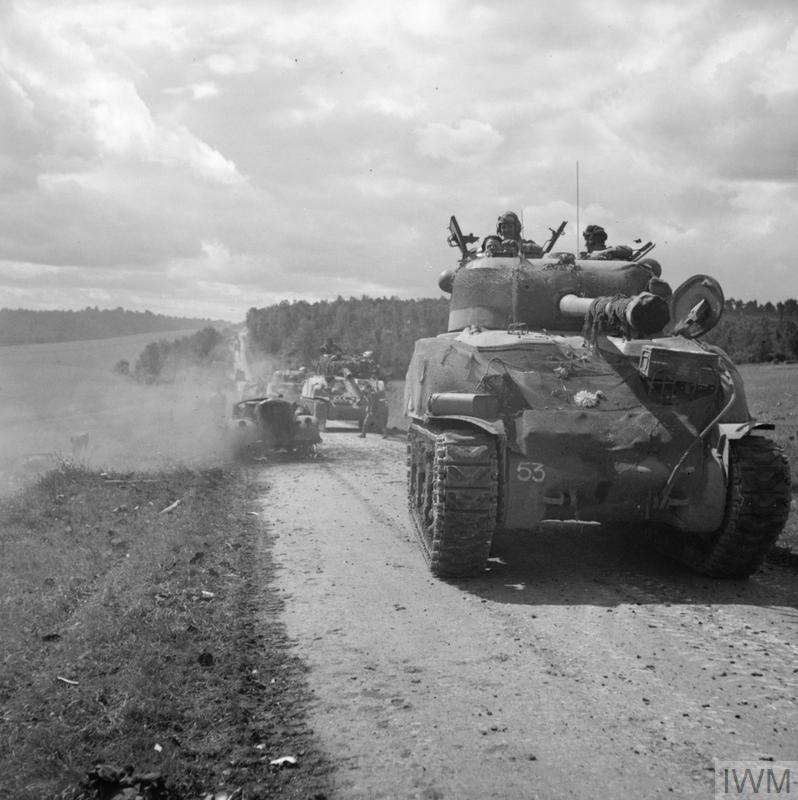
A Sherman Firefly tank of 2nd Irish Guards, 31 August 1944. - IWM (BU 302)
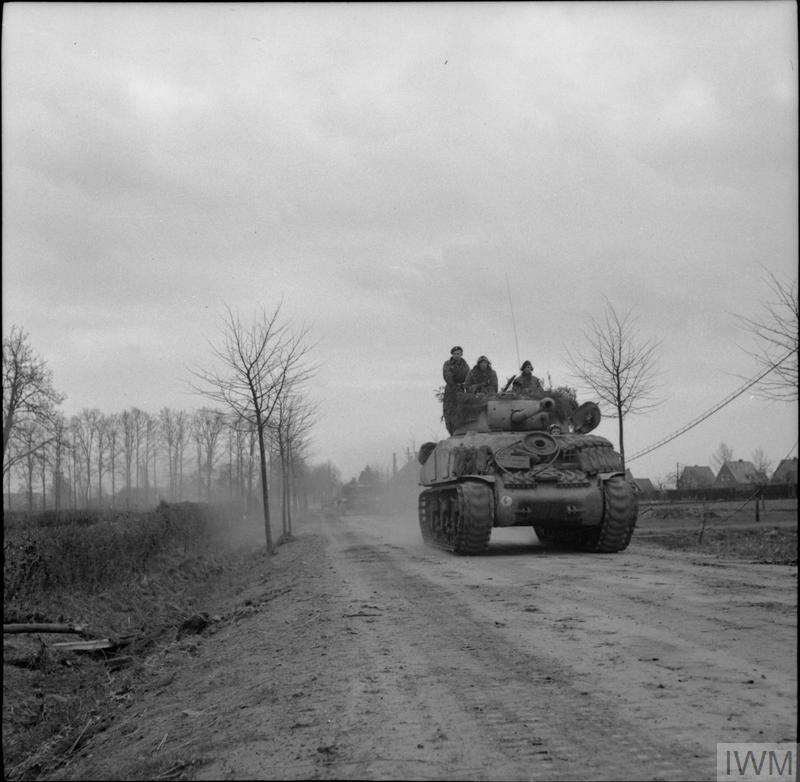
Sherman Firefly of 7th Armoured Division near Stadtlohn, 31 March 1945. - IWM (BU 2890)

Sherman tanks of 11th Armoured Division during the advance towards Gemert, 26 September 1944. - IWM (B 10358)
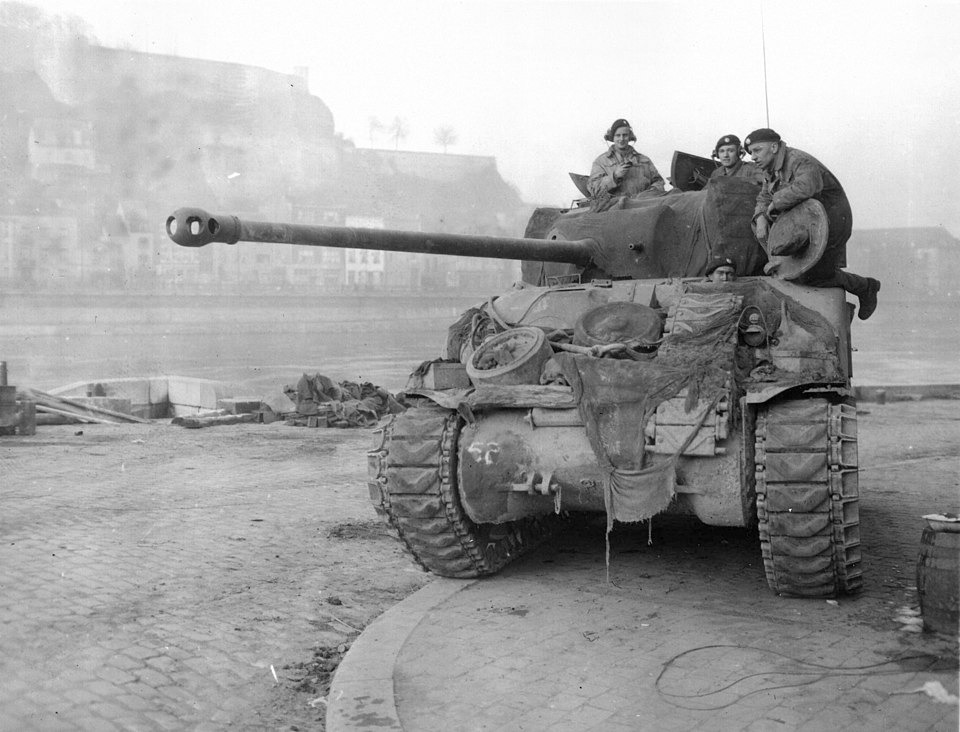
Sherman IC Hybrid of Guards Armoured Division at Namur.
TL;DR
gib moar Firefly pls
Sources
British Battle Tanks: American-Made World War II Tanks - David Fletcher & Steven J. Zaloga
Sherman Minutia (Sherman minutia homepage) - Pierre-Olivier Buan, Joe DeMarco and Leife Hulbert
Sherman Tanks British Army and Royal Marines - Dennis Oliver
War Thunder Wiki (Sherman Ic | War Thunder Wiki)
If you read all of this, thanks very much. If anything’s inaccurate, please let me know.
